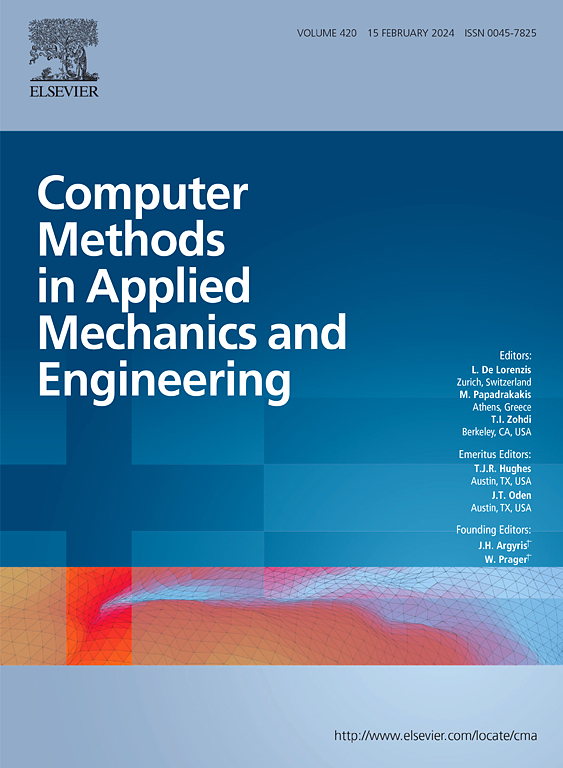Transient dynamic robust topology optimization methodology for continuum structure under stochastic uncertainties
IF 6.9
1区 工程技术
Q1 ENGINEERING, MULTIDISCIPLINARY
Computer Methods in Applied Mechanics and Engineering
Pub Date : 2025-04-27
DOI:10.1016/j.cma.2025.118019
引用次数: 0
Abstract
Time-variant uncertainties are omnipresent in engineering systems. These significantly impact the structural performance. The main challenge in this context is how to handle them in dynamic domain response topology optimization. To tackle this challenge, a new transient dynamic robust topology optimization (TDRTO) method is proposed to optimize the topology of continuous structures. This method comprehensively considers the uncertainties of material property, loading directions, and time-variant stochastic parameters of loading amplitudes. The time-variant performance function is transformed into a set of independent instantaneous performance functions, where the stochastic processes are discretized by using the optimal linear estimation method to simulate the correlations among various time nodes. The mean and standard deviation of the structural compliance are approximated through a Taylor expansion. Moreover, the Hilber-Hughes-Taylor α method is employed to address the structural dynamic problem. The design and stochastic sensitivities are derived by the “discretize-then-differentiate” and the adjoint methods, thereby improving the computational efficiency. Three illustrative cases are tested to validate the efficacy of TDRTO method, which shows its superiority over the traditional robust topology optimization method for dealing with time-variant stochastic uncertainties.
随机不确定性下连续体结构的暂态动态鲁棒拓扑优化方法
时变不确定性在工程系统中普遍存在。这些对结构性能有显著影响。这方面的主要挑战是如何在动态域响应拓扑优化中处理它们。针对这一挑战,提出了一种新的瞬态动态鲁棒拓扑优化方法(TDRTO)来优化连续结构的拓扑结构。该方法综合考虑了材料特性的不确定性、加载方向的不确定性以及加载幅值的时变随机参数。将时变性能函数转化为一组独立的瞬时性能函数,利用最优线性估计方法对随机过程进行离散化,模拟各时间节点之间的相关性。结构柔度的均值和标准差通过泰勒展开近似。采用Hilber-Hughes-Taylor α方法求解结构动力学问题。采用“先离散后微分”和伴随法推导了设计灵敏度和随机灵敏度,从而提高了计算效率。通过三个实例验证了TDRTO方法的有效性,表明其在处理时变随机不确定性时优于传统的鲁棒拓扑优化方法。
本文章由计算机程序翻译,如有差异,请以英文原文为准。
求助全文
约1分钟内获得全文
求助全文
来源期刊
CiteScore
12.70
自引率
15.30%
发文量
719
审稿时长
44 days
期刊介绍:
Computer Methods in Applied Mechanics and Engineering stands as a cornerstone in the realm of computational science and engineering. With a history spanning over five decades, the journal has been a key platform for disseminating papers on advanced mathematical modeling and numerical solutions. Interdisciplinary in nature, these contributions encompass mechanics, mathematics, computer science, and various scientific disciplines. The journal welcomes a broad range of computational methods addressing the simulation, analysis, and design of complex physical problems, making it a vital resource for researchers in the field.

 求助内容:
求助内容: 应助结果提醒方式:
应助结果提醒方式:


